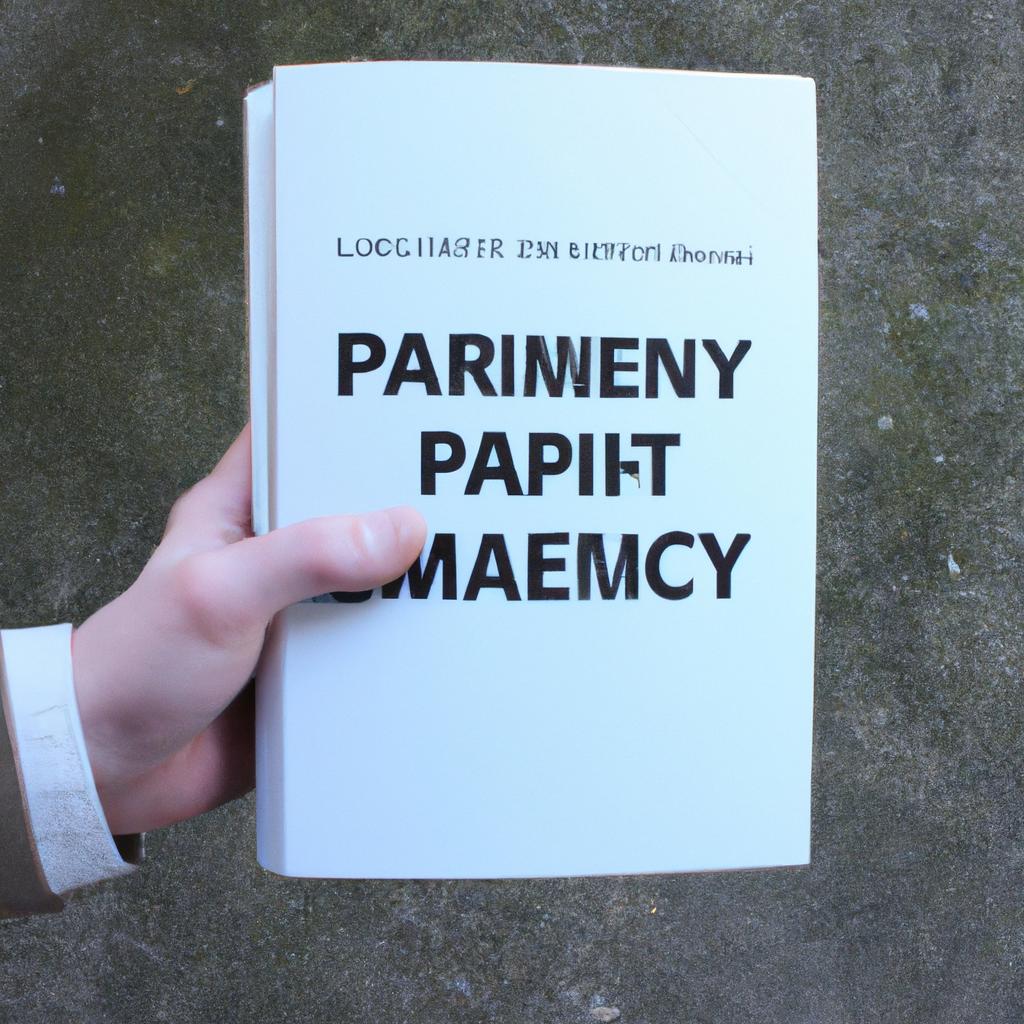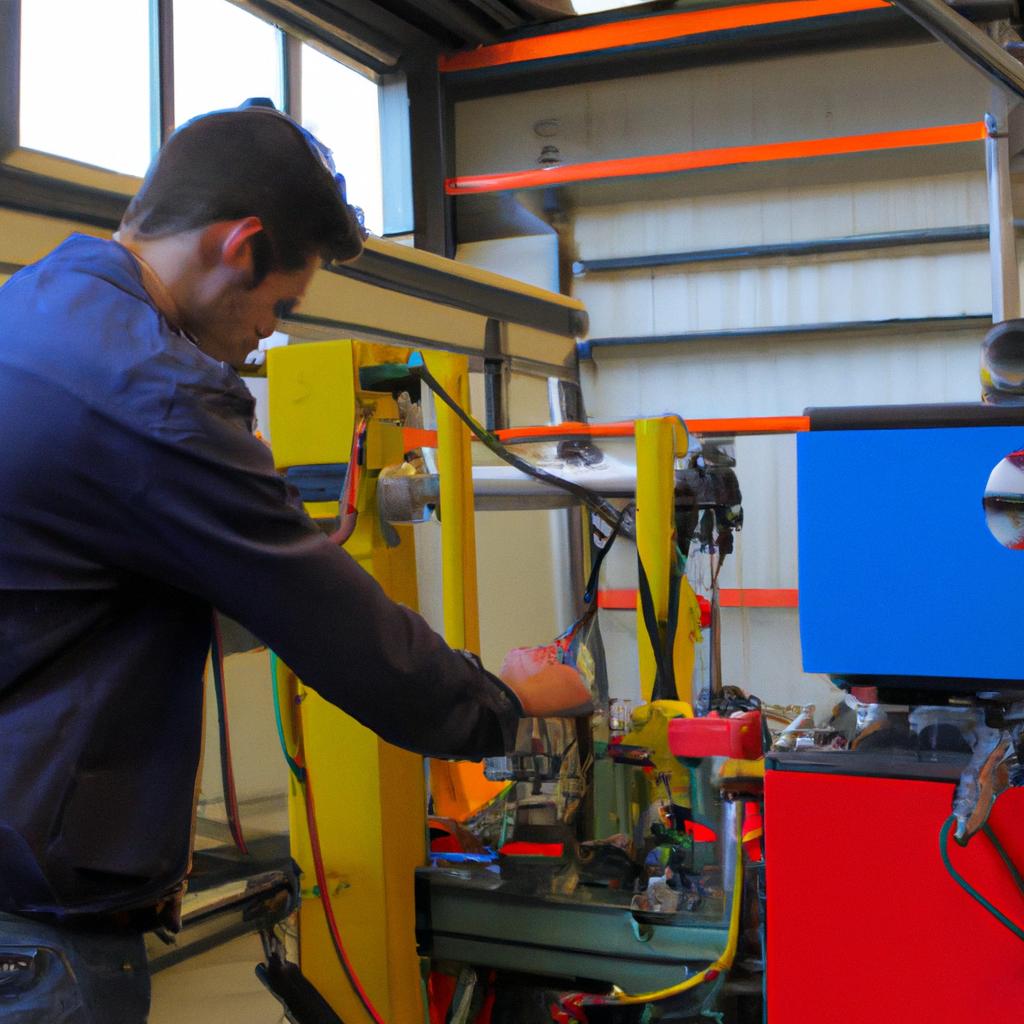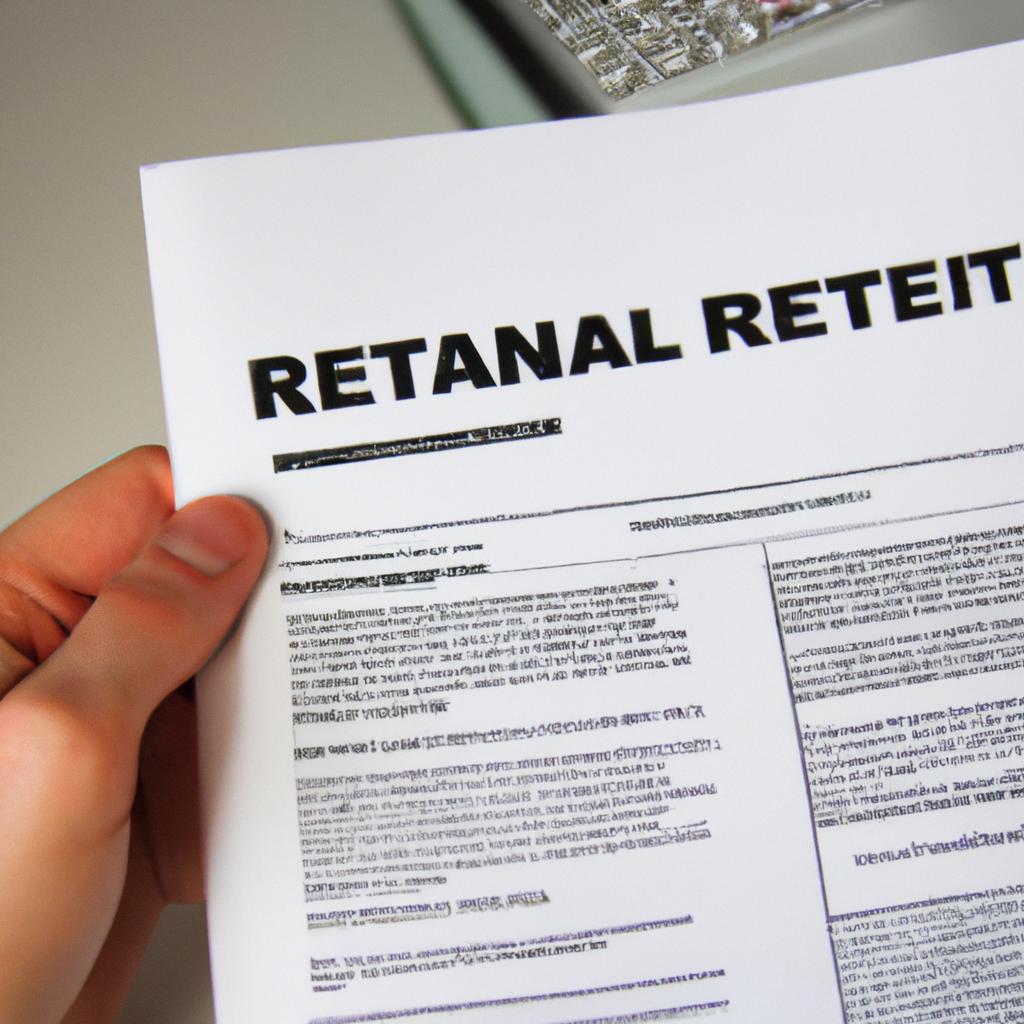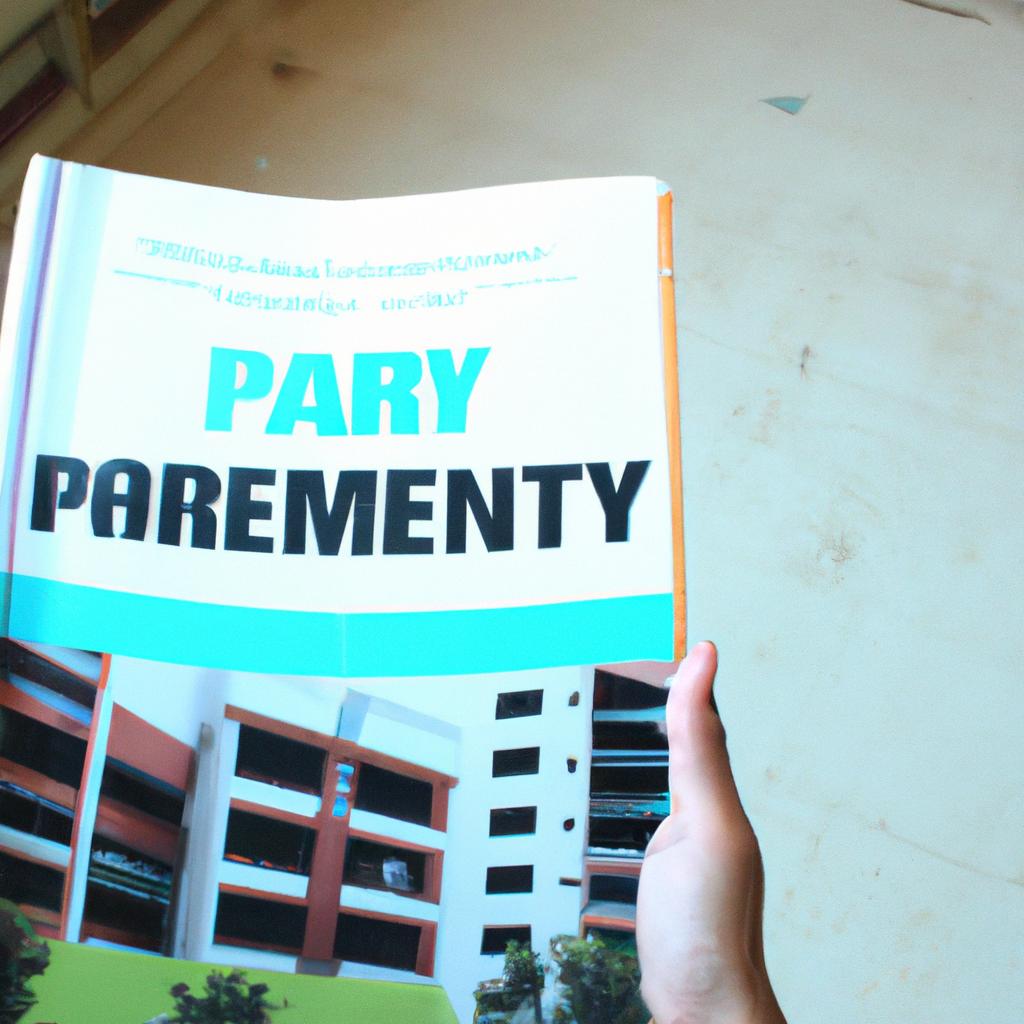The process of leasing a villa or apartment involves various legal and administrative procedures that are crucial for maintaining effective property management. In this article, we will explore the intricacies of lease agreements in villas and apartments, focusing on their significance in ensuring smooth tenant-landlord relationships and the overall well-being of the property. To illustrate these concepts, let us consider a hypothetical scenario where a landlord enters into a lease agreement with tenants who wish to rent an upscale villa for a period of one year.
In this case study, it is essential to understand that lease agreements act as legally binding contracts between landlords and tenants, outlining the rights and responsibilities of each party involved. A comprehensive lease agreement ensures clarity regarding rental terms such as duration, payment obligations, maintenance responsibilities, and any additional provisions specific to the property. By establishing clear expectations from both parties at the outset, potential disputes can be minimized or even avoided altogether during the tenancy period.
Overall, understanding the nuances of lease agreements in villas and apartments is vital for efficient property management. This article aims to provide insights into various aspects related to lease agreements by examining key elements such as negotiation processes, termination clauses, security deposits, and dispute resolution mechanisms. By delving into these topics, readers will gain valuable knowledge that will help them navigate the leasing process and ensure a successful tenancy experience.
One of the primary aspects to consider when entering into a lease agreement is the negotiation process. This involves discussions between the landlord and tenants regarding rental terms, such as monthly rent amount, payment schedule, and any specific conditions or requirements. It is crucial for both parties to communicate their expectations clearly and reach a mutually beneficial agreement before finalizing the lease contract.
Another important element in lease agreements is the inclusion of termination clauses. These clauses outline the circumstances under which either party can terminate the lease before its designated end date. Common termination scenarios include non-payment of rent, violation of terms by either party, or in some cases, early termination with proper notice. Including these clauses protects both landlords and tenants by providing clear guidelines on how to handle unforeseen circumstances that may arise during the tenancy period.
Security deposits also play a significant role in lease agreements. Typically, landlords require tenants to pay a security deposit upfront as a form of financial protection against potential damages or unpaid rent. The amount of the security deposit should be specified in the lease agreement along with details on its refundability and any deductions that may be made at the end of the tenancy for repairs or outstanding payments.
Inevitably, disputes may arise between landlords and tenants during their time together. To address this, it is essential to include dispute resolution mechanisms in lease agreements. These mechanisms can range from mediation to arbitration or even legal proceedings if necessary. By including such provisions in advance, both parties have a clear roadmap for resolving conflicts without resorting to costly litigation.
In conclusion, understanding lease agreements’ intricacies is fundamental for effective property management when leasing villas or apartments. By carefully considering negotiation processes, termination clauses, security deposits, and dispute resolution mechanisms within these contracts, landlords can establish comprehensive frameworks for smooth tenant-landlord relationships throughout the duration of their leases. This not only ensures compliance with legal requirements but also promotes a positive living experience for tenants and protects the property’s overall well-being.
Types of Lease Agreements for Villas and Apartments
To ensure a smooth and mutually beneficial relationship between tenants and landlords, it is essential to have a well-defined lease agreement in place. Such agreements outline the terms and conditions that both parties must adhere to throughout their tenancy period. In the context of villas and apartments, there are several types of lease agreements available.
One common type of lease agreement is the fixed-term lease. This agreement specifies a predetermined duration for the tenancy, typically ranging from six months to one year. During this period, neither party can terminate the lease without just cause or mutual consent. For instance, consider a hypothetical scenario where Mr. Smith signs a fixed-term lease for an apartment in downtown New York City for one year. He agrees to pay $2,000 per month as rent until the term expires.
Another option is a periodic or month-to-month lease agreement. Unlike fixed-term leases, these agreements do not have a specified end date but instead continue on a monthly basis until either party provides notice to terminate the arrangement. This flexibility benefits those who require temporary accommodation or anticipate potential changes in their living circumstances. For example, Mrs. Johnson rents a villa near the beach on a month-to-month basis while she waits for her new house to be built.
Lease Agreement Emotional Impact
- Security: A clear and comprehensive lease agreement gives tenants peace of mind by providing legal protection against unexpected evictions.
- Stability: Knowing the agreed-upon terms allows tenants to plan their lives accordingly without fear of sudden changes or disruptions.
- Fairness: A well-drafted lease agreement ensures fairness by establishing guidelines that apply equally to both landlords and tenants.
- Clarity: By clearly outlining rights and responsibilities, a lease agreement eliminates confusion or misunderstandings between parties.
| Security | Stability | Fairness | Clarity |
|---|---|---|---|
| ✓ | ✓ | ✓ | ✓ |
In summary, lease agreements for villas and apartments come in various forms to suit the needs of both tenants and landlords. Fixed-term leases provide stability through a predetermined duration, while periodic leases offer flexibility with no specified end date. A well-crafted agreement not only establishes legal protection but also provides emotional security, stability, fairness, and clarity for all parties involved.
Moving forward to ensure an effective lease agreement, it is essential to consider important clauses that should be included to protect the interests of both landlords and tenants.
Important Clauses to Include in a Lease Agreement
In the previous section, we explored the different types of lease agreements that are commonly used in villas and apartments. Now, let’s delve deeper into some important clauses to include in a lease agreement to ensure smooth property management.
Firstly, it is crucial to clearly outline the terms and conditions regarding rent payment. This includes specifying the amount due, frequency of payments (e.g., monthly or quarterly), accepted modes of payment, and any penalties for late payments. By setting these expectations upfront, both landlords and tenants can avoid misunderstandings or disputes related to rental payments.
Secondly, it is essential to establish guidelines pertaining to maintenance responsibilities. This involves addressing who is responsible for repairs and upkeep of various aspects of the property such as plumbing systems, electrical fixtures, appliances, and common areas. Including a clause outlining procedures for reporting maintenance issues can help prevent potential conflicts between landlords and tenants.
Thirdly, a well-drafted lease agreement should address restrictions on use and alterations within the rented property. For instance, it may specify whether pets are allowed or if smoking is prohibited. Additionally, it could outline any limitations on modifications or renovations that tenants can undertake without prior approval from the landlord. These stipulations ensure that all parties involved have a clear understanding of their rights and obligations.
Lastly, including provisions for dispute resolution mechanisms can be beneficial in case disagreements arise during the tenancy period. Mediation or arbitration clauses enable landlords and tenants to resolve conflicts outside of court while promoting fair resolutions through neutral third-party involvement.
By implementing these clauses effectively in lease agreements, both landlords and tenants can mitigate potential conflicts by establishing clear expectations from the outset.
Emotional Bullet Point List
- Rent payment terms: Ensure prompt financial transactions.
- Maintenance responsibilities: Preserve your living environment.
- Use restrictions: Respect shared spaces and community rules.
- Dispute resolution mechanisms: Foster effective conflict resolution.
Emotional Table
| Clause | Importance | Benefits |
|---|---|---|
| Rent payment terms | Ensures financial stability | Avoids late payments and penalties |
| Maintenance responsibilities | Preserves property value | Prevents disputes over upkeep |
| Use restrictions | Promotes harmonious living | Maintains a respectful community |
| Dispute resolution mechanisms | Facilitates fair resolutions | Resolves conflicts without legal battles |
Understanding the Rights and Responsibilities of Landlords, we will further explore the obligations that property owners must adhere to in order to maintain a healthy landlord-tenant relationship.
Understanding the Rights and Responsibilities of Landlords
Important Clauses to Include in a Lease Agreement
In the previous section, we examined some important clauses that should be included in a lease agreement. Now, let’s delve deeper into understanding the rights and responsibilities of landlords.
To illustrate these concepts, consider the case study of Mr. Johnson, who owns several rental properties in a residential complex. He wants to ensure smooth property management by drafting comprehensive lease agreements. One key clause he includes is the “Maintenance and Repairs” provision. This clause specifies that tenants are responsible for maintaining their rented premises in good condition and promptly reporting any damages or necessary repairs to the landlord. By including this clause, Mr. Johnson can avoid potential disputes regarding responsibility for maintenance issues.
Understanding the rights and responsibilities of landlords involves considering various aspects such as rent collection, eviction procedures, and ensuring compliance with health and safety regulations. Here are some key points to keep in mind:
- Rent Collection: The lease agreement should clearly outline the amount of rent due, payment methods accepted, due dates, late fees if applicable.
- Inspections: Landlords have the right to inspect their property periodically but must provide reasonable notice to tenants beforehand.
- Disclosure Obligations: It is crucial for landlords to disclose any known defects or hazards associated with the property before signing the lease agreement.
- Security Deposits: When renting out a property, landlords often require tenants to pay a security deposit which acts as protection against damage or unpaid rent.
These elements emphasize how important it is for both parties involved—the landlord and tenant—to understand their respective roles and obligations within a lease agreement.
| Lease Agreement | Rights and Responsibilities |
|---|---|
| Maintenance | Tenant upkeep |
| Rent Collection | Timely payments |
| Inspections | Periodic property checks |
| Disclosures | Communication about defects |
By adhering to these guidelines during the preparation of a lease agreement, landlords can protect their rights and maintain a harmonious landlord-tenant relationship.
Transitioning to the next section, let’s now explore the obligations and responsibilities of tenants in more detail. Understanding these aspects is crucial for creating balanced lease agreements that benefit both parties involved.
Tenant Obligations and Responsibilities in a Lease Agreement
Understanding the Rights and Responsibilities of Landlords is crucial when entering into a lease agreement for villas or apartments. By understanding their role, landlords can effectively manage their properties while maintaining positive relationships with tenants. To illustrate this, let’s consider a hypothetical scenario where John owns an apartment complex and leases out units to various tenants.
In John’s case, he has several rights as a landlord that enable him to protect his investment and ensure the smooth operation of the property. These include:
- Right to Collect Rent: As the owner of the property, John has the right to collect rent from his tenants on time and in full accordance with the terms agreed upon in the lease agreement.
- Right to Screen Tenants: It is within John’s rights to thoroughly screen potential tenants by conducting background checks, verifying employment history, and checking references. This helps ensure responsible individuals occupy his units.
- Right to Maintain Property: John must regularly maintain and repair any issues that arise in his property to provide a safe and habitable living environment for his tenants.
- Right to Enter Property: In certain circumstances outlined by law, such as emergency repairs or inspections, John may have the right to enter rented units after providing reasonable notice.
On the other side of the coin are landlords’ responsibilities towards their tenants. These obligations should be upheld throughout the tenancy period:
- Providing adequate notice before making changes or entering tenant premises
- Maintaining essential services like electricity, water supply, heating/cooling systems
- Addressing maintenance concerns promptly
- Respecting privacy rights
By striking a balance between these rights and responsibilities, landlords like John can establish trust with their tenants and foster a harmonious living environment.
| Rights | Responsibilities |
|---|---|
| Collect rent on time | Provide proper notice before entry |
| Screen potential tenants | Maintain essential services |
| Regularly maintain property | Address maintenance concerns promptly |
| Enter premises when necessary | Respect tenants’ privacy rights |
In summary, understanding the rights and responsibilities of landlords is crucial in effectively managing properties. By upholding their obligations while protecting their rights, landlords can create a positive rental experience for both themselves and their tenants.
Transitioning into the next section on “Common Disputes and How to Resolve Them,” it is essential for landlords to be aware of potential conflicts that may arise during tenancy agreements.
Common Disputes and How to Resolve Them
To illustrate the importance of understanding tenant obligations and responsibilities, let’s consider a hypothetical scenario. Imagine that John, a tenant living in an apartment complex, frequently violates the terms of his lease agreement by hosting loud parties late into the night. This behavior not only disturbs his neighbors but also breaches his responsibility to maintain a peaceful living environment. Understanding these obligations is crucial for tenants to ensure harmonious coexistence within their community.
When entering into a lease agreement, tenants should be aware of the following key obligations:
- Payment of rent: Timely payment of monthly rent is essential to uphold one’s financial responsibilities as outlined in the lease agreement.
- Maintenance and cleanliness: Tenants are responsible for keeping their rented property clean and well-maintained, ensuring it remains in good condition throughout their tenancy.
- Compliance with rules and regulations: It is important for tenants to adhere to any established policies or guidelines set forth by the property management or homeowner’s association.
- Quiet enjoyment: Respecting quiet hours and being mindful of noise levels ensures a comfortable living environment for all residents.
Understanding these obligations can help prevent disputes between landlords and tenants. To further exemplify this point, we present a table summarizing common disputes related to tenant responsibilities:
| Common Disputes | Description |
|---|---|
| Late Rent Payments | Failure to pay rent on time may result in penalties or eviction notices. |
| Property Damage | Tenants are liable for any damages caused due to negligence or intentional actions. |
| Violation of Noise Policies | Excessive noise disturbances violate other tenants’ right to quiet enjoyment. |
| Breach of Pet Policy | Non-compliance with pet-related rules such as leash requirements or cleaning up after pets can lead to conflicts with both landlords and fellow tenants. |
In conclusion, understanding one’s obligations as a tenant helps foster positive relationships with landlords and fellow residents. By fulfilling responsibilities such as timely rent payment, proper property maintenance, compliance with rules and regulations, and respecting the peace and quiet of neighbors, tenants contribute to a harmonious living environment. Next, we will explore tips for effective property maintenance in lease agreements.
Tips for Effective Property Maintenance in Lease Agreements
Having discussed common disputes that may arise in lease agreements and their resolution, we now turn our attention towards tips for effective property maintenance. By implementing these strategies, landlords can ensure the smooth running of their properties while tenants enjoy a comfortable living environment.
To illustrate the importance of proactive property maintenance, let’s consider a hypothetical scenario involving an apartment complex. Suppose there is a leak in one of the units due to a malfunctioning pipe. Without prompt action from the landlord or property management team, this issue could escalate into further damage affecting multiple units. To prevent such situations, it is crucial to prioritize regular inspections and timely repairs.
Tips for Effective Property Maintenance:
- Conduct Regular Inspections:
- Schedule routine inspections to identify any potential issues before they become major problems.
- Focus on areas prone to wear and tear, such as plumbing systems, electrical wiring, and structural integrity.
- Ensure compliance with safety regulations and building codes during inspections.
- Promptly Address Repair Requests:
- Respond promptly to tenant repair requests to demonstrate your commitment to maintaining the property.
- Establish clear communication channels between tenants and the property management team.
- Prioritize urgent repairs that impact health or safety concerns over cosmetic fixes.
- Maintain Open Communication:
- Foster positive relationships with tenants through open lines of communication.
- Encourage tenants to report maintenance issues promptly by providing various contact methods (e.g., phone, email).
- Provide regular updates regarding ongoing maintenance projects or improvements being made within the property.
- Document Maintenance Activities:
- Keep detailed records of all maintenance activities performed on each unit.
- Include information such as date, description of work completed, materials used, and associated costs.
- These records serve as valuable documentation should any disputes or legal issues arise in the future.
| Tip | Explanation |
|---|---|
| Conduct Regular Inspections | Preemptive inspections help identify and address potential problems early on. |
| Promptly Address Repair Requests | Timely response to repair requests demonstrates commitment to tenant satisfaction. |
| Maintain Open Communication | Effective communication enhances relationships and encourages prompt reporting of issues. |
| Document Maintenance Activities | Detailed records provide evidence and support during any potential disputes or legal matters. |
By following these tips for effective property maintenance, landlords can ensure a positive living experience for tenants while safeguarding their investment. Proactive measures, such as regular inspections, prompt repairs, open communication channels, and thorough documentation, contribute to a harmonious landlord-tenant relationship and minimize potential conflicts down the line.
 Villas In Florence
Villas In Florence



